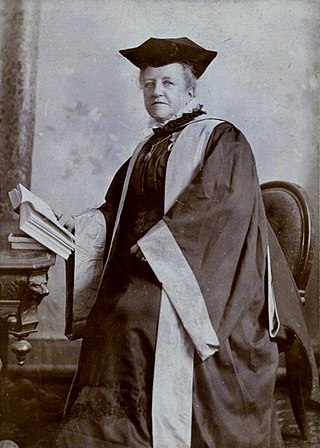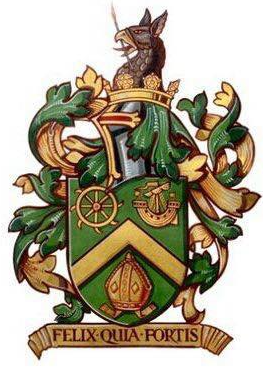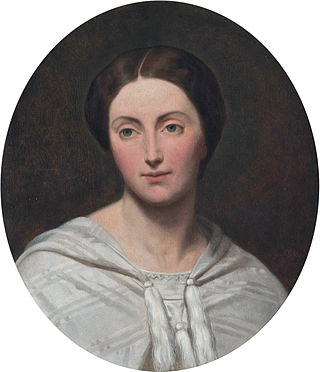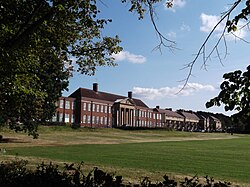
St Hilda's College is one of the constituent colleges of the University of Oxford in England. The college is named after the Anglo-Saxon saint Hilda of Whitby and was founded in 1893 as a hall for women; it remained a women's college until 2008. St Hilda's was the last single-sex college in the university as Somerville College had admitted men in 1994. The college now has almost equal numbers of men and women at both undergraduate and postgraduate level.

Dorothea Beale LL.D. was a suffragist, educational reformer and author. As Principal of Cheltenham Ladies' College, she became the founder of St Hilda's College, Oxford.

Magdalen College School (MCS) is a private day school in the English public school tradition located in Oxford, England, for boys aged seven to eighteen and for girls in the sixth form. It was founded by William Waynflete about 1480 as part of Magdalen College, Oxford.

Oxford East is a constituency represented in the House of Commons of the UK Parliament by Anneliese Dodds of the Labour Party, who also serves as party chair.

Oxford High School is a private day school for girls in Oxford, England. It was founded by the Girls' Day School Trust in 1875, making it the city's oldest girls' school.

Rye St Antony School is an independent Catholic boarding and day school for girls aged 3 to 18 years and boys aged 3 to 11 years in Headington, Oxford, England. The school's name is commonly abbreviated and referred to by both pupils and staff as 'Rye'. Rye is unique as a girls' independent Catholic school due to the fact that it was founded by two women rather than by a religious order.

New Marston is a suburb about 1.25 miles (2 km) northeast of the centre of Oxford, England.
Heathfield School is a girls' independent boarding and day school in Ascot, Berkshire, England. In 2006, the school absorbed St Mary's School, Wantage and was briefly named Heathfield St Mary's School but reverted to Heathfield School in 2009 to prevent confusion with another local girls' school St Mary's School, Ascot. The school's grounds cover 36 acres (15 ha) situated on the edge of Ascot, providing access from London, the major airports, the M3 and M4 motorways.

Marston Road is a road in the east of Oxford, England. It links London Place, the junction of St Clements, the foot of Headington Hill, and Morrell Avenue by South Park to the south with the suburb of New Marston to the north. A mini-roundabout has been replaced by traffic lights and connects with Cherwell Drive and Headley Way at the northern end. To the north is the suburb of Northway. The road is designated the B4150 but this is not shown on signs.

Howell's School is a private day school for girls in Llandaff, a district in northern Cardiff, Wales. It consists of a nursery, infants, junior, senior school and a sixth form. The sixth form became coeducational in September 2005 and was renamed Howell's Co-ed College.
The Society of St John the Evangelist (SSJE) is an Anglican religious order for men. The members live under a rule of life and, at profession, make monastic vows of poverty, celibacy and obedience.
Talbot Heath School is a selective, private day and boarding school for girls aged 3–18 located in Talbot Woods, Bournemouth, Dorset, England. The school was founded as Bournemouth High School in 1886 by founding headmistress Mary Broad. Talbot Heath was originally a Church of England School.

Saint Felix School is a 2–18 mixed, private, day and boarding school in Reydon, Southwold, Suffolk, England. The school was founded in 1897 as a school for girls but is now co-educational.

Anna Maria Helena, comtesse de Noailles was an English noblewoman who used her wealth and influence to support the reform of women's rights.
Catherine Isabella or Isabel Dodd was an English academic, novelist and education writer. In 1892 she became the first woman on the academic staff of Victoria University of Manchester, as a lecturer in education.

Mary Datchelor School was an endowed grammar school for girls on Camberwell Grove in Camberwell, Greater London, England. It was established in 1877 and closed in 1981. It was known for its innovations in encouraging teacher training, and for its encouragement of music.
Sarah Allen Olney was a British headmistress. She was the founding head at two schools. She was first head of Blackheath High School and she left there to join with her sister, Rebecca Olney, to create "The Eves".












